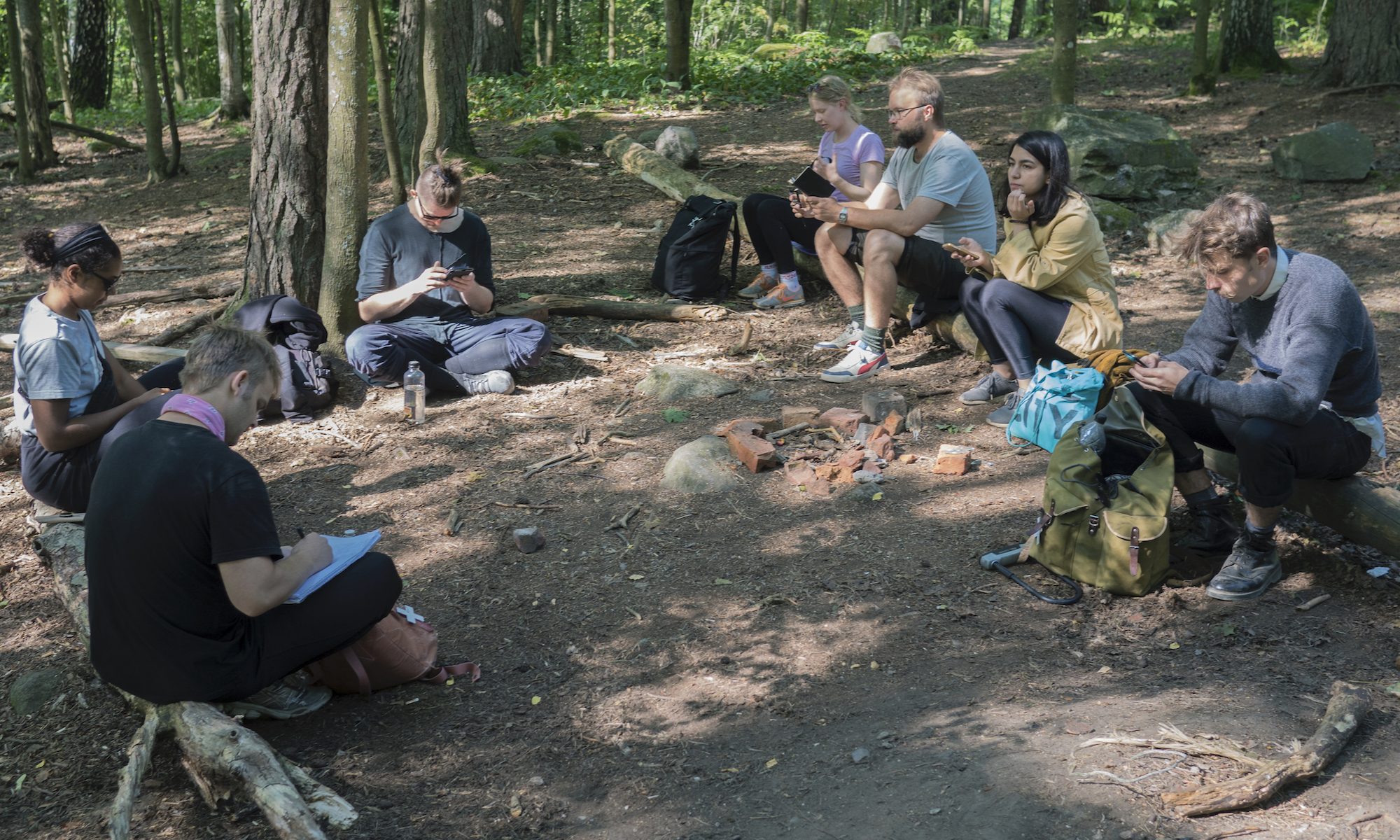The Ecological Approach to Visual Perception (1979) James J. Gibson feels like a solid leeway towards performance-architecture and animal-built-enviroment-queries (the document I have is messy and I think it suits the theme well). He includes the non-living world as a key factor in the relations of the living, channelling proto-new-material views and I think a particular asset of the text is that it gives a lot of agency to non-humans. “In making life easier for himself, of course, [man] has made life harder for most of the other animals.” he writes and I agree. Sustainable designs would benefit from approaches which teach us how to deal with discomfort and suffering.
If a terrestrial surface is nearly horizontal (instead of slanted), nearly flat (instead of convex or concave), and sufficiently extended (relative to the size of the animal) and if its substance is rigid (relative to the weight of the animal), then the surface affords support. It is a surface of support, and we call it a substratum, ground, or floor. It is stand-on-able, permitting an upright posture for quadrupeds and bipeds. It is therefore walk-on-able and run-over-able. It is not sink-into-able like a surface of water or a swamp, that is, not for heavy terrestrial animals. Support for water bugs is different.
Some parts read like an alchemical liturgy and need a serious uphauling. I begun reading Gibsons introduction to affordances as it were linked to behavioural sciences because the way he talks about animals and terrains makes me think about survival. I was provoked by his writing because I don’t believe in survival: People and animals may prefer colours and textures (instead of comfort) and are open for adjusting their bodies in favour of interesting designs (even if it kills them). But a closer reading revealed that he is reaching for something else entirely: A development of a “naïve realism” which he describes in a lecture from 1974.
As an affordance of support for a species of animal, however, they have to be measured relative to the animal. […] an affordance cannot be measured as we measure in physics.
An important fact about the affordances of the environment is that they are in a sense objective, real, and physical, unlike values and meanings, which are often supposed to be subjective, phenomenal, and mental. But, actually, an affordance is neither an objective property nor a subjective property; or it is both if you like. An affordance cuts across the dichotomy of subjective-objective and helps us to understand its inadequacy. It is equally a fact of the environment and a fact of behavior. It is both physical and psychical, yet neither. An affordance points both ways, to the environment and to the observer.
Naïve realism is a nice basis for a theory for visual perception. It underlines visual as a multisensory experience and acknowledge perception as a relationship. Perception is aided by movement which enables us to read ambient light which reflects from surrounding surfaces from different angles. We determine the quality of our environment from an array of “information” this process provides us. Gibson believes that ambient light contains information (and not merely data which our intellect makes sense of) because the reflecting ambient light is a result of a surfaces physical attributes and effects the world. This process is not dependent on us. I understand this as: Stuff performs. If we like we can naïvely take this information exchange as being real. He argues that we are sharing and perceiving a real world!
By focusing on ambient light and by underlining that we see only surfaces, he criticizes the theory of optics (which he calls a 17th century fluke). Gibson argues that the optical structure of the eye, which produces the “outside world” to the inside of human body (similar to a camera obscura) should not be understood as evidence that we merely see and interpret images. He argues that we are not seeing objects, things or other beings, we in motion and forming relations to different surfaces. Because visual perception is not merely an image formed by the eye, he speculates that we can see behind walls (in the 1974 lecture). As relationships are presented as the foundation of experiences, we must acknowledge that there is a world outside of our bodies – Which is how his approach to affordances becomes a critique of dualism. In short: Our perception of others is not a distinction (between us and them) but a realization of a relationship. #ॐ
I became interested in Gibson trough Parikka who refers to him in a 2015 article on Mutating Media Ecologies in an effort to “deterritorialize a notion of media outside that of the human body, and look at non-human things as part of an embodied meshwork of agencies”. I’m currently midway a The Ecological Approach to Perception & Action (2013) Harry Heft which seems like a good resource for a broader view on what Gibson stood for.
Tim Ingold refers to Gibson in The Perception of the Environment (2010) saying “I cannot think of any other work that has exerted a greater influence on my thinking over the last ten years or so.”. The book has a chapter on ecological phycology.
Perception, Gibson argued, is not the achievement of a mind in a body, but of the organism as a whole in its environment, and is tantamount to the organism’s own exploratory movement through the world. If mind is anywhere, then, it is not ‘inside the head’ rather than ‘out there’ in the world. To the contrary, it is immanent in the network of sensory pathways that are set up by virtue of the perceiver’s immersion in his or her environment.
Living In A Reversed World – Erismann & Kohler (1954) narrated by Gibson is a great companion for the text.

